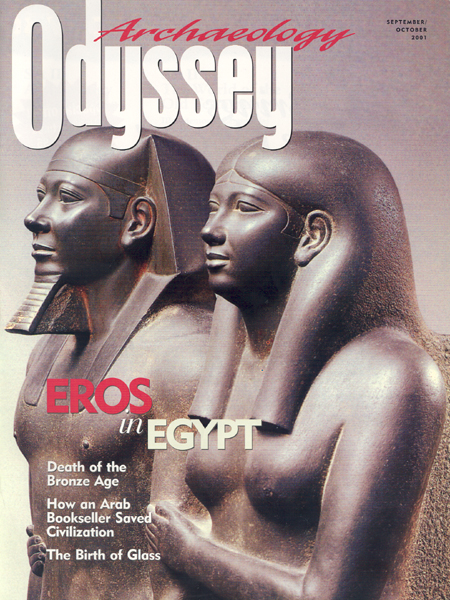Archaeology Odyssey, September/October 2001

Features
It was a cataclysm of immense proportions: Near the end of the 13th century B.C.E., the great Bronze Age civilizations of the Aegean and Near East suddenly collapsed. In the latter part of the Late Bronze Age (c. 1400–1200 B.C.E.), Mycenaean civilization flourished in Greece and Crete. The Hittites controlled most of Anatolia […]
It sounded like the roar of a high-speed train—but it caused far more devastation. The earthquake that hit northwestern Turkey at Izmit, near Istanbul, on August 17, 1999, measured 7.4 on the Richter scale and killed 17,000 people. The tremors destroyed entire buildings, collapsed bridges, burst dams and caused landslides. Three months later, another […]
We moderns tend to believe that ancient Egyptian art contains little that is overtly sexual. Egyptian painting seems to lack the strong sensual qualities of much classical art and its descendant, the richly textured art of the Renaissance. This impression is mistaken, however. In paintings and reliefs in Egyptian temples and tombs, the sexuality […]
In a fiery speech delivered at Clermont, France, in 1095 C.E., Pope Urban II called on Western Christians to expel the “Infidel” from the Holy Land. Thus the Pope unleashed the Crusades, during which European armies gained control of most of the Levant, including Jerusalem. The Pope also unleashed something else—a kind of […]
